
|
| Accept Cookies | Customize | Refuse Cookies |
Simone Rota www.juzaphoto.com/p/SimoneRota  |
 | Nikon AF 35-70mm f/3.3-4.5 Pros: Small and light zoom that in some cases can be convenient Cons: Many specimens suffer from a blocked diaphragm Opinion: Let's take a look at this goal: 35...............70,..... focal range is limited. 3,3......4,5,.... even the brightness is not great. What if it were just this, that is, basically a normal, ranging from the light wide angle to the light tele, everything we need? ... well then it is certainly to be considered, given the very low cost, the reduced weight and size. From an optical point of view it inherits the scheme of the predecessor ai-s, so you can rest assured, the defects are limited, just don't go looking for them and we won't see them. The apparent sharpness is good, it was sold in kit with the first af bodies and the new nikon customers had to be loyal, they could not be disappointed. Natural rendering and good color, it has few lenses. Of course, it is not a fixed or a professional zoom. If it was expensive and costs so little, I think the reason lies in the modest construction. The second version has a slightly easier maf ring but gives the impression of being even more fragile than the 1st version. The only real flaw shown over time are the aperture blades that become lazy or even blocked, typically at CT. It can be repaired but the repair costs more than the lens, so you need luck / patience to find a good specimen. Unless you are a little photo repairer and get your hands on it. sent on July 27, 2024 |
 | Nikon AF 28-85mm f/3.5-4.5 Pros: All the good has already been said by those who preceded me Cons: None given the price, I abandoned it after years of use only to favor smaller and lighter lenses Opinion: The example I had is of the first AF series. I've used it on film, mostly slides, and digital d700. Great all-rounder in both uses. I think it's superior to the later aspherical zooms of the af-d series because it's sharper at TA and because of its overall more plastic rendering. Slightly warm colors. Impeccable on film, it was a perfect travel companion and reportage with f90x. Replaced for the weight with the smaller 35-70 f3.3-4.5 and for the dismissal of the digital where it also performed very well. On digital, on the one hand, it has a sharp but less contrasted rendering, very pleasant and slightly "vintage", on the other hand, it is affected in some cases by side light. Minor defects are distortion, relevant for architecture: at 28mm it is regular barrel, easily corrected; Present in various forms over the entire focal range. TA vignetting. The AF is slow compared to modern lenses, and yet... Coupled with the D700, when called upon for some ceremony, it didn't miss a beat, perhaps also because it was assisted by the flash illuminator. Thanks to the d700 no problem even in sports photos used in af-c. sent on January 14, 2024 |
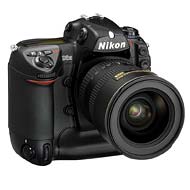 | Nikon D2H Pros: Ergonomics, stability, viewfinder, burst. It is part of the Nikon series that had as its progenitor the F5 film and that ends with the D6 Cons: Weight and size, as for the entire line of the aforementioned flagships, make it "challenging" for amateur use Opinion: This year this SLR turns 20 and, despite the value of time and product, I am going (unfairly) to an attempt to evaluate with today's parameters, for those who want to buy it, not for passion of vintage or yet another camera to add to the collection, but to use it as the main body. The robustness, the quality of the mirror-shutter mechanism, the ergonomics, the viewfinder, the attention to detail, the communication with the flash, the bursts, ... They are also today (2023) at the highest levels. The camera "goes out at distance" in prolonged use. If 8 fps burst were not considered sufficient, I think perhaps it would be good to dedicate yourself to videos rather than photographs. Autofocus is difficult to evaluate objectively, however it has been surpassed in sensitivity, speed and precision by technological evolution. In good light sports the camera can still have its say, while in photographic hunting the low resolution is an Achilles' heel. It is true that, for most situations, you can have photos that have little to envy to those obtained from today's cameras, but it is also true that this would require a much greater expenditure of time, stalking, approach to the subjects, optics of adequate focal length, etc ... In ordinary photography today can also be used a much more discreet object such as the smartphone, but apart from this, the d2h does not present particular contraindications. The colors I find them very beautiful, while the conversion to b / w lays bare the little refinement of the shades, especially if you go to enlarge the image too much (no problem for prints up to 20x30). There is a lot of talk about dynamic range and in this sense this camera is placed 20 years ago, with a dynamic range much lower than that of cameras of 10-15 years ago, which instead is not so far from that of the current ones. It should be compared to a slide scan, with a good amateur scanner, but nothing more. Certainly not the one obtainable through a drum scanner, and not even remotely close to that of a projected dia. So much so that the magnificent 3D color matrix light meter, inherited directly from the F5, is not in itself a guarantee to take home the shot: conditions with excessive light waste should be avoided. In fact, being within the range covered by the sensor, the exposure is returned in a natural and faithful way. Moreover, the reference, when this camera had been developed (LBCAST sensor) was still the film, which x the courses and historical appeals, back in fashion... sent on January 18, 2023 |
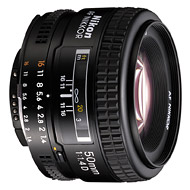 | Nikon AF 50mm f/1.4 D Pros: See previous reviews Cons: See previous reviews Opinion: Sometimes it is said that reviews are not very useful because you can find written about everything and the exact opposite. I do not think this is the case with this objective, where opinions are confirmed, and I too find myself completely in it. It is the 50mm Nikon that I prefer, for color rendering and sense of three-dimensionality. Very resolving, aberrations reduce its sharpness to f1.4. While remaining soft, it improves to f2. In this range the blurred is very creamy ! The yield changes from f2.8 onwards where the sharpness reaches very high values. We now come to the flaws. The construction is not really impeccable. After prolonged use over the years I had to replace the focus helicoid, which I would say is quite normal. Overexposure by 1/2 stop, verified both with respect to other lenses and to external light meter. It suffers from parasitic lights in "not good" conditions, for example outdoors in the central hours with humidity and overcast sky. Rarely, even very extensive chromatic aberrations can be created. I have practically not found these phenomena on the reduced DX format, where, however, the angle of view is no longer what the lens was designed for. I found them limited in use on film, while in more cases I found them on digital FX. Anyway the hood is a good idea. Ultimately with some precautions I think it is a lens that can give excellent satisfaction and excellent value for money sent on April 09, 2022 |
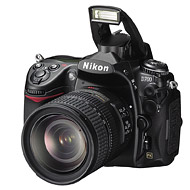 | Nikon D700 Pros: Reliability and robustness; full frame (resulting in image quality benefits) at relatively low cost Cons: The flagship has the weight, but not the physique Opinion: Everything to say about this camera has been said... what else to add in 2021 ?. In my opinion the functionality is excellent, devoid of video and a whole series of functions (hdr on camera, etc ..) of which the following models have been "full". Conversely, it represents the point of arrival of that philosophy that Nikon has developed on analog SLR cameras and that has had its maximum expression with the f100. The baked file is photorealistic and soft. Probably the portrait his ideal scope. sent on August 08, 2021 |
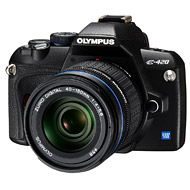 | Olympus E-420 Pros: Portability without sacrificing the reflex system, essential in use, classic line Cons: Considering the price at which it is located today (2021) I would say no one Opinion: Taken the e-420 for a couple of years. The Olympus e-4xx system (the 400 has a kodak ccd sensor, the later a Panasonic cmos), while being replaced by the mirrorless m4/3 (which offers more: a fleet of optics in quantity and quality 'much higher, on-camera stabilization,.. and many other things ..), could still interest someone today. Those who want to spend very little and just can't give up the mirror. As a second camera to take on vacation, where photography is not the main purpose, or even in long journeys, where you need to be light. The body alone weighs less than 400g and together with the 2 kit lenses there is in a really small handbag. "Daylight backpackers", so I read on an American site, that is, for those who travel and shoot in daylight. In addition to the 2 kits (14-42 and 40-150) there is also a fixed 25mm brightness f/2.8 pancake: with this it becomes a compact. I find the ergonomics excellent and I found the "plush" shot, very well cushioned, of the flagship e-1. The dynamic range is relatively small, but well exploitable thanks to a really precise and accurate spot light meter. The viewfinder is small, being used to that of film SLR and nikon d700, but it is bright and usable without any problem. The central af point is reliable, definitely at least for simple shots. The commands are few but everything is customizable, so you no longer have to enter the menu'. The battery as they have already said lasts forever. After about 500 shots in 2 months I resumed it after another 4 months and it was still over half a charge. The baked jpgs did not convince me and then I used it in raw. Compared to the default values of acr I reduced exposure and contrast and increased brightness. Even in raw there is some valid instructions for the rendering of the color, on which Olympus is a guarantee and in fact even so the colors do not leave something to be desired. They are distinguished from those, equally pleasant, of the Nikon. The level of detail is good and well softened by a rather heavy aa filter.. it's a matter of taste.. however, it is better to avoid contrast masks or sharpening, because with these reduced sensors it takes little to create visible artifacts. In any case, the machine does its duty more than excellently. sent on August 01, 2021 |
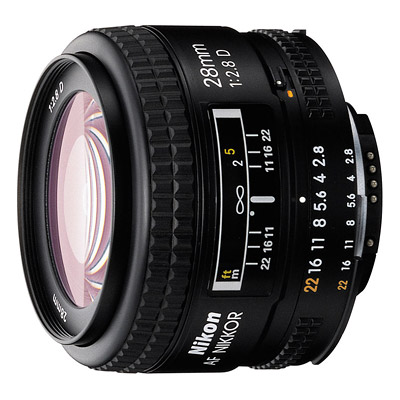 | Nikon AF 28mm f/2.8 D Pros: small and light, good construction (better than other afds although with cheaper materials), reliable and versatile Cons: optical quality does not go beyond full sufficiency Opinion: Good for reportage / street given the small size, it is quite good even in the landscape and in generic use, thanks to the balanced contrast and the solidity of performance in the most diverse light conditions. However, it does not offer particular skills of sharpness, reproduction of shades and color rendering, pasty and in any case full. Ultimately recommended more for the practical/economic aspect than for those looking for high image quality. I used it on reflex fx, where it remains one of the few targetss that is AF, small and of good brightness. A TA in the middle of the frame is fine, you don't need to close the iris for acceptable sharpness. sent on April 15, 2021 |
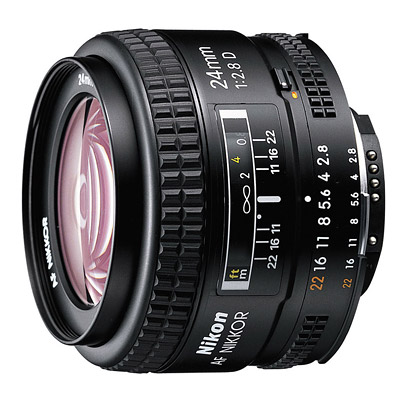 | Nikon AF 24mm f/2.8 D Pros: Light, compact, bright, well built. Useful in both dx and fx Cons: A dated project, today for the best detail on the whole frame there are optics designed for digital (but also the expense and footprint will be significantly higher). Opinion: A real cornerstone of the AFD kit, it responds to practical needs with well-studied compromises. It's okay for all diaphragms on dx, used as "35 equivalent." On FX, it changes skin from f5.6 to f8. Versatile in use (portrait set, landscape, interior, street,..) takes up little space in the bag and is able to give excellent satisfaction. sent on August 17, 2018 |
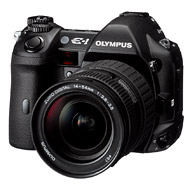 | Olympus E-1 Pros: Unsurpassed ergonomics, tropicalization, 100% viewfinder, sweeping shot, light meter, af doing its job, possibility to use the excellent zuiko Digital lenses that are at advantageous prices as the 4/3 SLR system is dead Cons: This camera does not have: rnDisplay adjustable high resolution, live view, video, 150 points AF, U1, U2, wi-fi, GPS, touch screen, objectives with the dock Opinion: Recommended for those who love technology little.rnThe pleasure of pure photography, a little 'philosophy of the Nikon DF, which costs twice the other current dslr x not have everything listed in the "against". However, this is still used today at 1/10 of the price. It is clearly the sensor that makes it obsolete. With only 5 MP you can not crop, the recovery of shadows is scarce, as well as very low is also the tightness to ISO. It is therefore necessary to compose and expose well to obtain good results. The grain or noise is pleasant, vaguely reminiscent of the analog and surprisingly good is the recovery of highlights. Pleasant return colors of the Kodak sensor, then developed by Leica with the m9 and by Pentax with the 645d .. but maybe this is now .. is prehistory of the digital age. sent on August 03, 2017 |
 | Tokina RMC 17mm f/3.5 Pros: Construction, reduced weight / footprint, sharpness, three-dimensionality Cons: Vignetting (FF), backlight resistance, chromatic aberration Opinion: Mechanically a jewel, I was positively impressed by the sharpness and the three-dimensionality of the image on d90 (field angle about 26mm equivalent). Compared to modern lenses, it produces less saturated colors and less contrast, easily augmented in pp to the right extent. A rare case in digital, it is very clear even to infinity. In some cases, in areas with very high contrast, it can be noted, with pushed magnification, contours tending to blue. In general, it improves by closing the diaphragm. I do not have digital FX, tried on film: you notice a bit of vignetting. sent on June 25, 2017 |
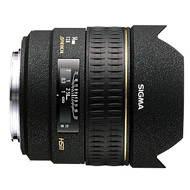 | Sigma 14mm f/2.8 EX Aspherical HSM Pros: Constructive quality, AF, sharpness, color fidelity, distortion control. Already good at 2.8. Cons: Unfortunately no longer in production, one of the best sigma-built lenses Opinion: Although the AF is not essential for this focus, it is very comfortable, hsm is lightning-fast and accurate. Good sharpness (at least my specimen ...) both on DX and FX. I've been able to test the d800's 36 MP lens with a positive impression; The slight drop to the extreme edges was far less noticeable than expected. It has quite a few details: The wide opening and the minimum focusing distance of just a few inches make it interesting for interior and still life applications. Frontal element is a large light collector. With light source in the vicinity of the frame creates flare. Too hard lights easily increase the contrast. On the other hand, when the light is widespread, with sunshine only partly covered by clouds, fogs, or in the morning or evening, it gives the best of itself by creating splendid images of sublime quality, inaccessible to zoom, even professional. RnIt finds affordable prices given the features but proof before purchase & egrave; More than ever. It is a pity that Sigma, who knows why, has soon abandoned production. sent on May 19, 2017 |
 | Nikon AF 28-70mm f/3.5-4.5 D Pros: low distortion, resistance against the light, sharpness af 5.6- f11, compact, rugged, lightweight, color fidelity, quality / price ratio Cons: "Haze" at the widest apertures Opinion: Personally gave me great satisfaction on film (especially b / n) .rnOttimi results also digitally despite being a old design. On D90 (already, ..purtroppo you lose the wide angle side) is clear (slight sharpening) both long and short to medium distances. It is not too contrasty. For the colors and tonal passages prefer it to the new zoom. Excellent resistance to flare and ghost.rnCostruttivamente simple, designed for general photography, does not have the specificity of professional goals (.. the price has 0 instead some less) and will not be the lens from blurred spectacular (but already af 5.6 and the right distances much can be done). rnCredo they are just to avoid the widest apertures. With little light better raise the ISO: holds better than more famous lenses (with the same sensor) ... but it is more of my impression. rnrn sent on April 17, 2015 |
 JuzaPhoto contains affiliate links from Amazon and Ebay and JuzaPhoto earn a commission in case of purchase through affiliate links.
JuzaPhoto contains affiliate links from Amazon and Ebay and JuzaPhoto earn a commission in case of purchase through affiliate links.May Beauty Be Everywhere Around Me